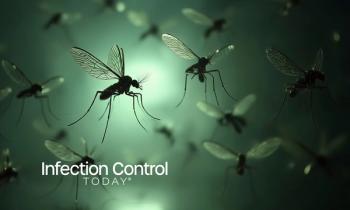
Tuberculosis and Beyond: What ER Physicians Are Seeing and Why Infection Preventionists Should Pay Attention
Staph, TB, and rising respiratory viruses are keeping ERs busy. Here’s what infection preventionists should watch for this season—and why vigilance matters.
As the fall respiratory season approaches, frontline clinicians are encountering a steady mix of infectious diseases that carry important lessons for infection preventionists (IPs). A physician who often works in the emergency department recently shared what he has been seeing—and why vigilance remains essential.
Matthew Pullen, MD, is an infectious disease physician and assistant professor of infectious diseases and international medicine at the University of Minnesota in Minneapolis. He is
“I’ve seen a lot of kind of the bread and butter of infectious diseases,” Pullen, who is also a member of ICT’s Editorial Advisory Board, explained. “Staphylococcus aureus infections are always a risk, especially in patients who use IV drugs or who have an existing PICC line [peripherally inserted central catheter] or port.” For IPs, those cases raise familiar concerns: line-associated infections, decisions on whether to remove devices, and broader surveillance for other possible infection sources.
Beyond staph, tuberculosis (TB) continues to surface, particularly in urban settings with diverse populations. “Our city has a pretty significant population from overseas, so we do see quite a bit of TB,” Pullen said. The challenge for IPs lies in quickly determining whether a patient requires airborne isolation. “Pulmonary TB is the most common form, but you can also have extrapulmonary TB—lymph node involvement, bladder infections, bone disease, or even TB meningitis. Those cases don’t require airborne precautions unless there’s pulmonary involvement, but you always need to rule it out.”
He recalled a recent patient with TB meningitis, made more vulnerable by long-term immunosuppressant therapy. “It’s a very severe infection, and outcomes often are not great,” he noted. “This patient survived, but with neurologic deficits.”
When asked about vaccines, he clarified: “There is the Bacillus Calmette-Guérin (BCG) vaccine, given to children in some parts of the world, but it mostly prevents extrapulmonary disease in infants. For adults, we don’t really have an effective vaccine.” Screening, therefore, remains the cornerstone of prevention, particularly for individuals in high-risk environments such as prisons, shelters, or communal living.
Globally, TB remains a formidable threat. “It’s one of the top causes of death in the HIV population worldwide,” he emphasized. “It barely takes any contact to spread, and treatment is still multiple medications for many months. If you can prevent yourself from getting active TB, that would be ideal.”
For IPs, these frontline observations serve as a timely reminder: as staph, TB, and seasonal respiratory viruses circulate, early recognition and appropriate precautions remain essential for protecting both patients and staff.
Newsletter
Stay prepared and protected with Infection Control Today's newsletter, delivering essential updates, best practices, and expert insights for infection preventionists.




